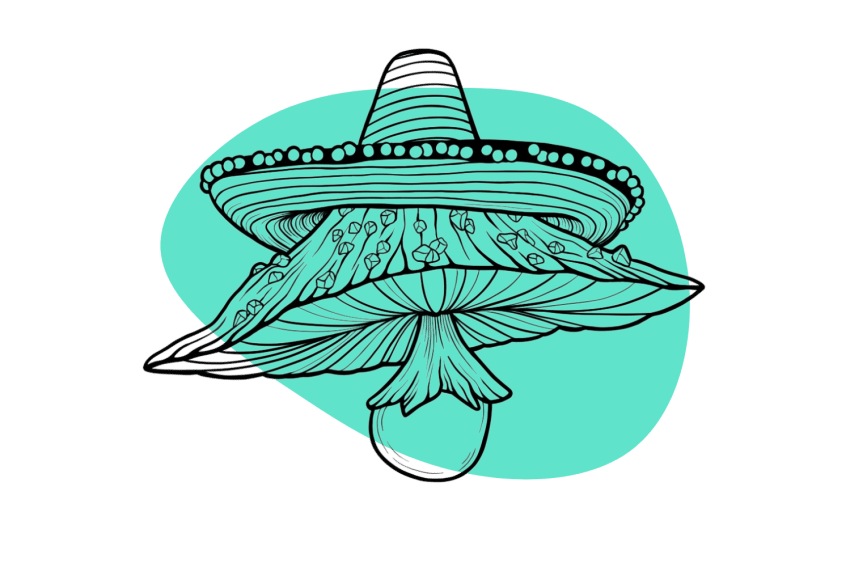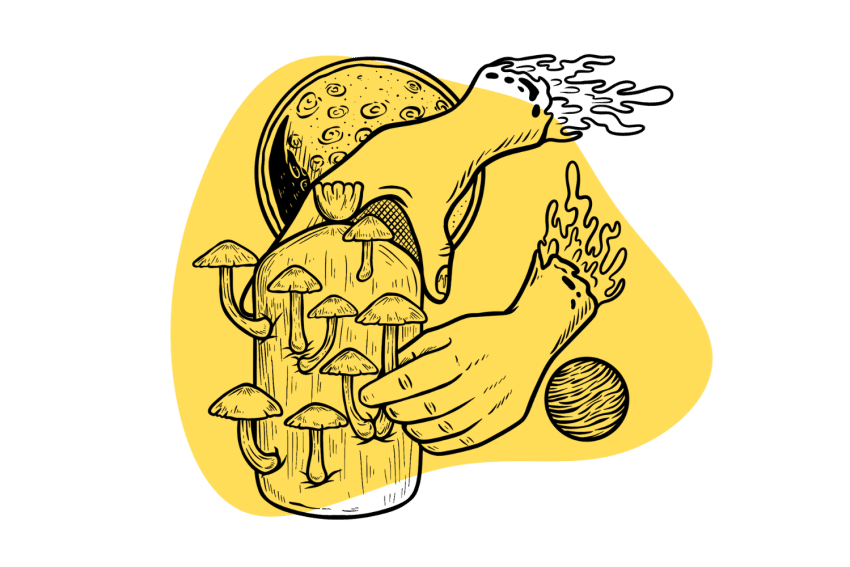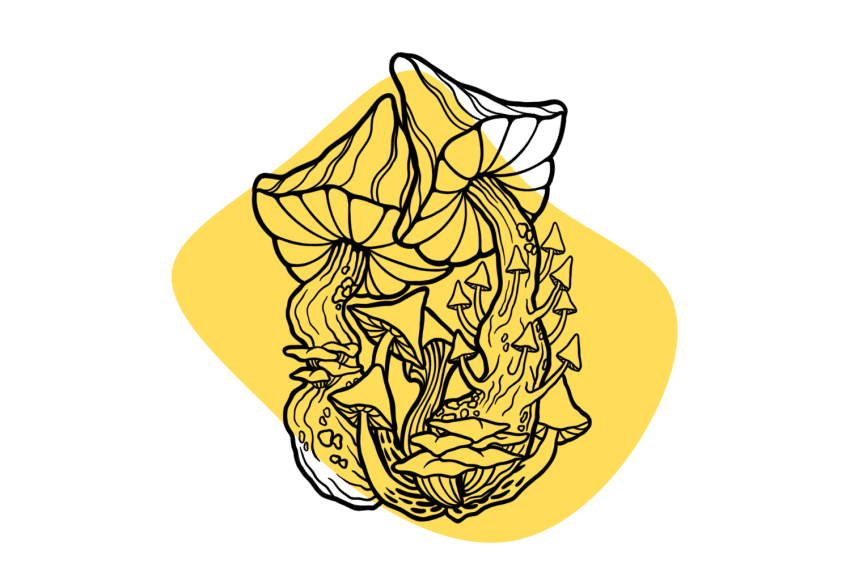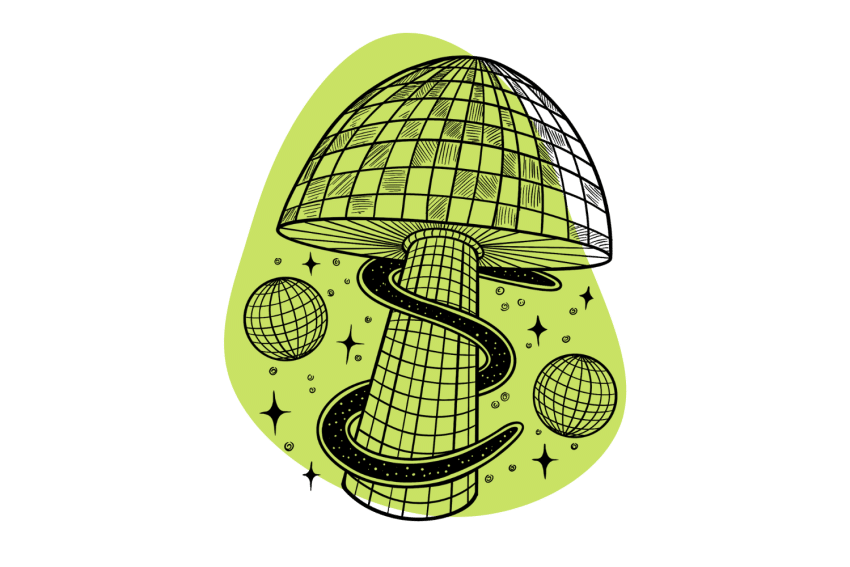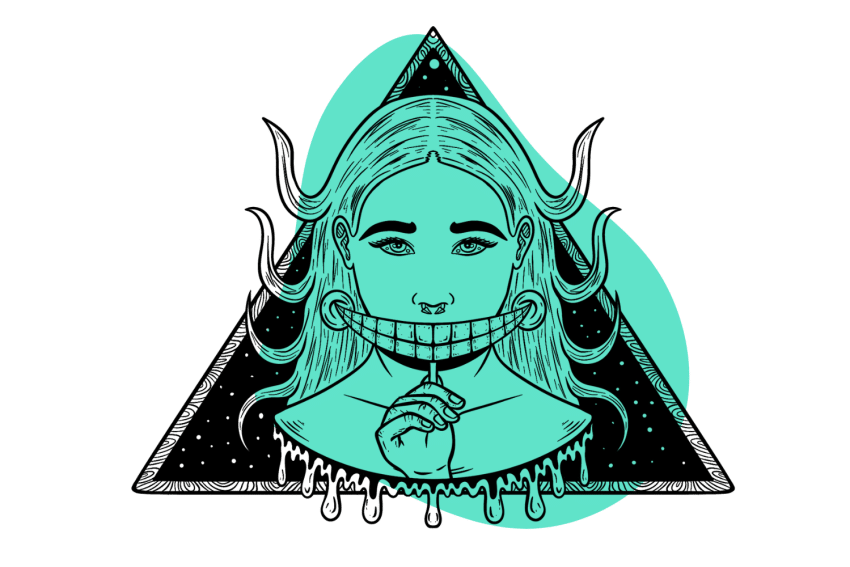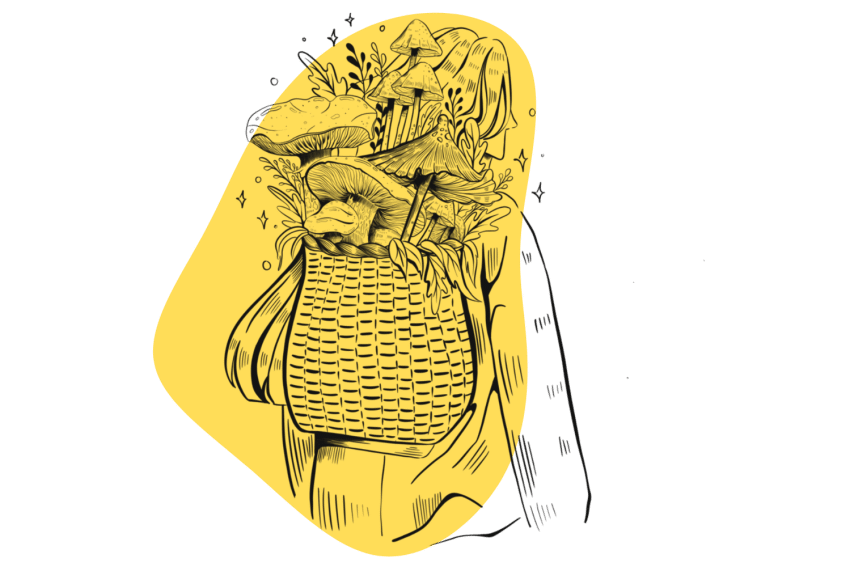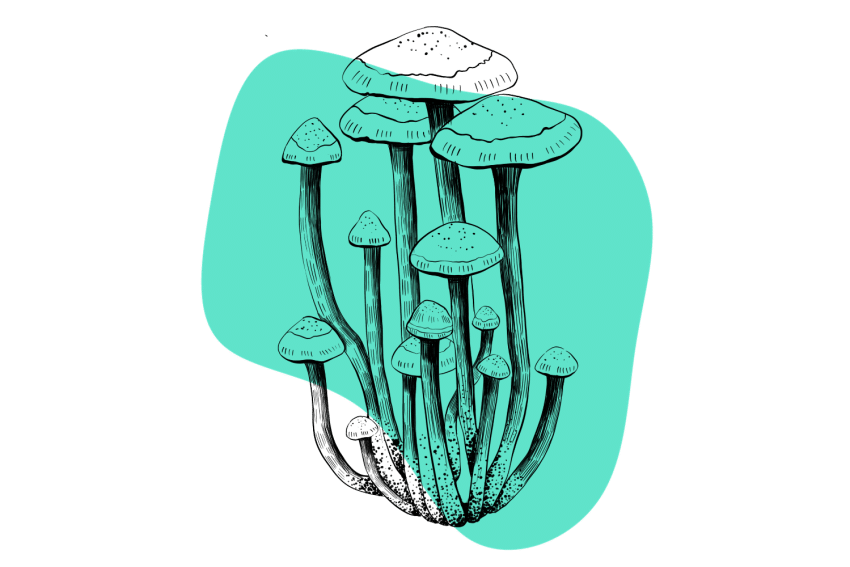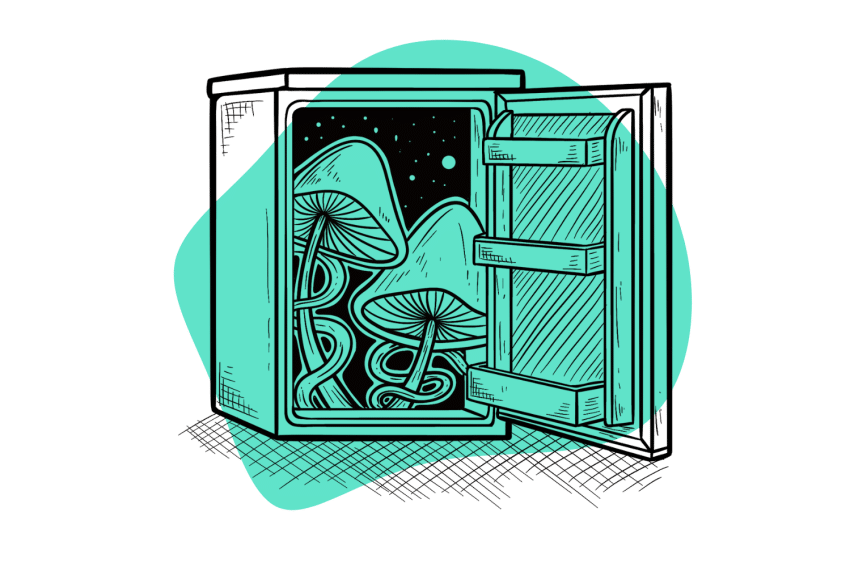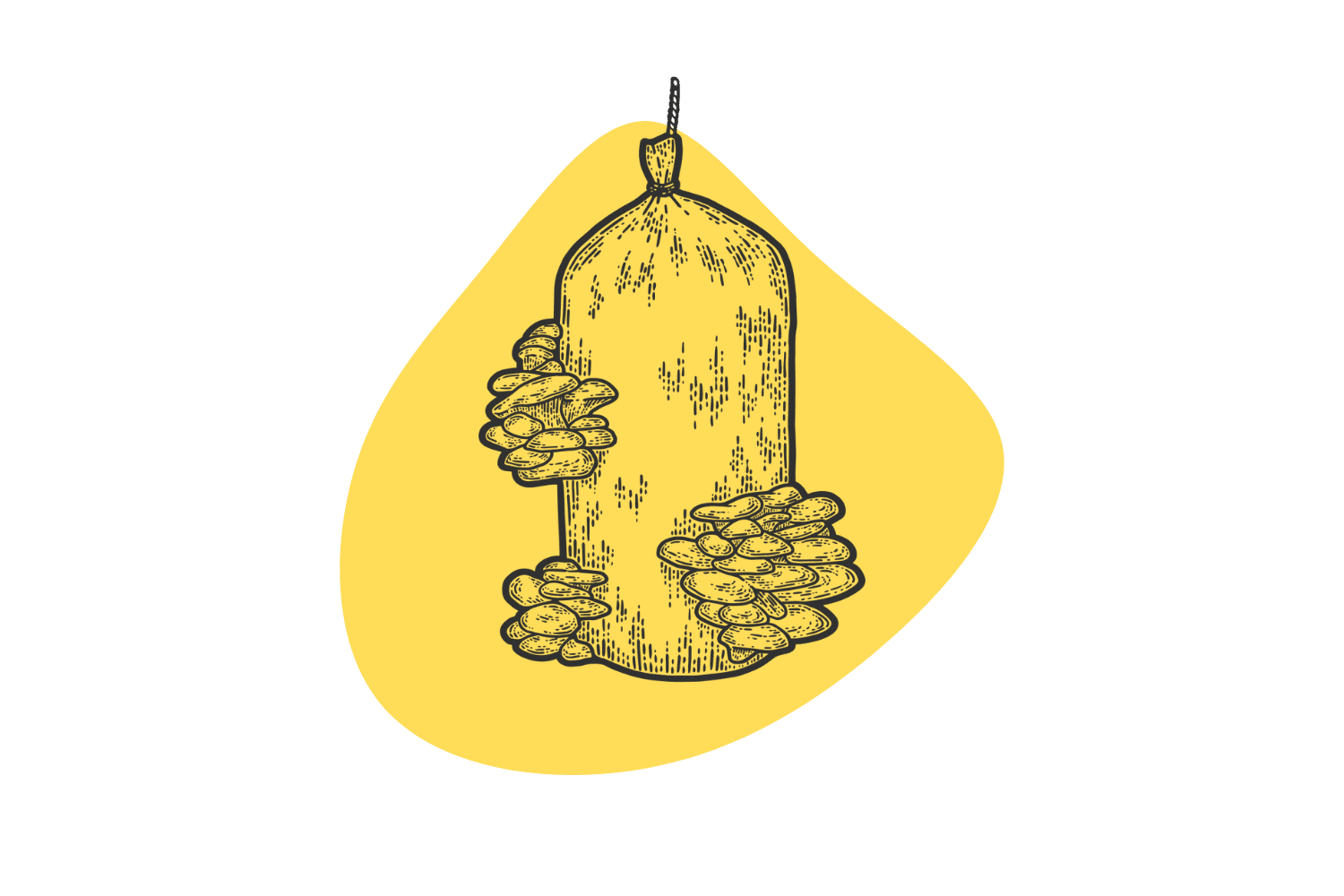Get Ready For A Trippy Treat: 3 Delightful Scooby Snax Recipes
Step up your magic mushroom capsules with these ruh-roh-proof Scooby Snax recipes. Here are 3 recipes and 10 common ingredients.
Scooby Snax or “Scoobies” are magic mushroom capsules combined with herbs and other natural ingredients to compliment the shrooms’ psychoactive effects and combat some adverse effects like upset stomach, anxiousness, or the “mushroom yawns.”
Capsules are also a great option if you’re looking to avoid the unpleasant texture and flavor of dried mushrooms.
While you might be able to find some underground sources online selling Scoobies, they often come at a premium price. Luckily, you don’t need to go looking for Scooby Snax; they’re easy to make right at home.
To prove it, we’ve got some easy recipes you’ll want to try to elevate your next shroom trip. This is sure to become your favorite way to take magic mushrooms.
The Basic Supplies Needed
The basic supplies you’ll need to make custom Scooby Snax (beyond the ingredients) include:
- Digital Scale — You’ll want a digital scale with a precision of at least 0.1 grams. The more sensitive, the better. Ideally, it can go to 0.001 grams though these tend to cost more.
- Coffee Grinder/Food Processor — The fastest way to grind up shrooms and other herbs is with an electric coffee grinder or a food processor.
- Capsules & Capsule Filler Machine — We like to use vegetable-based glycerin capsules, and capsule filling machines help to quickly and efficiently fill the capsules. Several options for these exist, often under $30.
- Tamper — Tampers press the powdered ingredients into the capsule to help maximize the capsule space.
What Size Of Capsules To Choose
Smaller capsules might be better if you have difficulty swallowing pills — but smaller pills mean you’ll need to take more to meet the dosage requirements for your shroom trip.
Medium capsules size 00-0 are the most common, but some people may want to take large capsules (size 000) for Scooby Snax as they are easier to fill and can fit more, which means you don’t have to swallow as many pills.
How much weight each capsule can hold will depend on the powder density of the ingredients — remember, some ingredients will be denser than others. Once you’ve decided on your capsule size, weigh the empty capsule on your scale.
Write down the weight of the pill and tare the scale to subtract that number from your Scooby Snax ingredients so you have an accurate weight.
The recipes we’ll be sharing use a standard 00-size capsule, which, from our experience, holds about 0.650 g (650 mg).
We like to have the shrooms take up about half of the recipe — but feel free to experiment with these ratios to find what works best for you.
Most filler machines can make 50 capsules at once.
Related: How Long Do Shroom Capsules Take to Kick In?
What Mushrooms Should I Use With Scooby Snacks?
Scooby Snax are typically made with Psilocybe cubensis, the most popular species of magic mushrooms. There are thousands of strains to choose from in this species, the most common being Golden Teacher, Koh Samui, and Penis Envy.
Some strains of magic mushrooms tend to have a higher potency than others, which may affect your dosage measurements. However, other factors, such as growing conditions, the time of harvest, and the drying process, can also affect potency.
Keep this in mind when calculating the doses of our Snax, and remember to start with a low amount and increase slowly over time.
For the sake of consistency in these recipes, we recommend Golden Teacher as they produce consistent shrooms with an average potency. They’re also the most widely available shroom and a favorite among new and experienced growers.
Scooby Snax Recipes
Here are a few recipes for making some of your own Scooby Snax at home.
1. The Bee’s Knees
Each capsule contains a wholesome blend of aromatic ingredients, including cinnamon, bee pollen, Asian ginseng, and ginger.
In cooking and baking, many find this heart-warming combination to provide various health benefits. These include improving digestion and increasing energy levels, which can complement your magic mushrooms’ buzzing effects.
To make 100 capsules (size 00) of Bee’s Knees, you’ll need the following:
- 33 g dried psilocybin cubensis
- 8 g bee pollen
- 8 g Asian ginseng
- 8 g cinnamon
- 8 g ginger
Combine the ingredients in a grinder and blend until they form a consistent powder and encapsulate. For a full psychedelic mushroom trip, take nine capsules.
If you’re looking for more subtle hallucinogenic effects, take six. And for a microdose — according to Dr. James Fadiman’s recommendations of 0.30 g — take one capsule.
2. Trippy Lemon Drops
The inspiration for this recipe is the trending magic mushroom technique called Lemon Tekking.
This technique involves soaking the dried psilocybin mushrooms in lemon or lime juice before consuming them.
This technique may — in theory — accomplish two things:
- Increase the Onset — The body converts psilocybin into psilocin, which is responsible for the psychedelic effects. Some believe the pH of the lemon juice may initiate the conversion process.
- Reduce Gastric Problems — Dried mushrooms are often hard on the stomach, so it’s common for people to experience upset stomachs and nausea. The pH of the lemon or lime (2.0–2.6) may help break down the mushroom material before you consume them without losing its potency.
Traditional lemon tekking involves:
- Taking your finely ground psilocybin cubensis mushrooms and squeezing fresh lemon or lime juice over the powder until it is covered.
- Mix well and allow to sit for 20 minutes, mixing occasionally.
- Either take the mixture as a shot or strain the solids and drink the juice, adding the solids to a tea or discarding them.
To make 100 capsules (size 00) of Trippy Lemon Drop, you’ll need:
- 33 g dried Psilocybin cubensis
- 8 g ascorbic acid (vitamin C powder)
- 8 g lemon balm
- 8 g Asian ginseng
- 8 g guarana
Ascorbic acid — or the supplement vitamin C powder — helps replace the work of citric juice in this Scooby Snax recipe. Lemon balm has a beautiful citrus aroma and may provide calming effects for the mind and digestion.
The guarana packs a similar punch to caffeine, and Asian ginseng helps with energy levels and mental alertness.
Take nine capsules for a full psychoactive mushroom dose; take six for a more subtle effect. And one capsule should work for a microdose.
3. Cognition Caps
These Cognition Caps include a trio of nature’s brain-boosting mushrooms: lion’s mane, reishi, and chaga.
These shrooms have centuries of traditional medicine history, with several cultures believing they support longevity and mental clarity. Still today, they are popular in herbal nootropic supplement blends.
To make 100 capsules (size 00) of Cognition Caps, you’ll need:
- 33 g dried Psilocybin cubensis mushrooms
- 10.5 g dried lion’s mane mushrooms
- 10.5 g dried reishi mushrooms
- 10.5 g dried chaga mushrooms
This recipe works great as a brain boost when taking psilocybin mushrooms as a microdose of one capsule (0.3-0.5 g of magic mushrooms).
But this Scooby is also a fun blend for full psychoactive doses at nine capsules, which can provide a more grounded high. If you’re looking for more subtle visual effects, try sticking to 4-6 capsules.
What Common Ingredients Are In Scooby Snax?
The sky’s the limit when it comes to crafting your own Scooby Snax blends with magic mushrooms. You can pair anything you want to with your magic mushrooms.
Beyond your choice of ground-up Psilocybin cubensis mushroom strains, here’s a list of popular ingredients combined to create scoobies and how they may positively affect your mushroom trip.
Asian Ginseng
Asian ginseng is a staple of Chinese medicinal herbs for improving mental and physical health by strengthening the immune system. It has stimulating effects, which can help increase your energy and alertness during a trip [1].
Some people add this to their Scooby Snax to counteract the sleepy effects of magic mushrooms.
Bee Pollen
Bee pollen comes from the pollen grains collected by honeybees from flower plants. Its high nutrient contents — it’s a source of protein, vitamins, minerals, antioxidants, and amino acids — qualify it as a superfood [2].
When added to Scooby Snax, bee pollen can help curb some of the digestive issues related to dried shrooms and add an uplifted and energetic effect. Many find this helps counteract the “mushroom yawns.”
Chaga Mushrooms
Chaga mushrooms are adaptogenic mushrooms that grow on birch trees. Adaptogens help the body manage and adapt to stress, improve energy, and enhance cognitive performance.
These mushrooms are rich in antioxidants, vitamins, and minerals some say may prevent cellular damage and protect one’s overall health [3]. When combined with psilocybin mushrooms, many people report feeling more grounded and relaxed.
Chamomile Flowers
You may be familiar with chamomile from your nighttime teas since it’s often used as a sleep aid, thanks to its anxiety and stress-relieving properties [4].
Chamomile is a popular ingredient in Scooby Snax for the same reasons. It may also assist with stomach issues.
Ginger Powder
One of the most common side effects of eating dried mushrooms is an upset stomach and nausea. Adding a touch of ginger powder to your shroom capsules may help offset this.
The active ingredient in ginger is gingerol, which has anti-inflammatory properties that can help soothe the digestive tract. Some research has found ginger may even help block certain signals to the brain responsible for signaling feelings of nausea [5].
Guarana
Guarana is a climbing plant native to the Amazon jungle. This herb is common in energy drinks because it acts as a stimulant and may even have more power than caffeine [6]. It can improve mental alertness, concentration, and physical performance.
Guarana, along with magic mushrooms, may produce a more uplifting and euphoric experience. You want to be careful with this ingredient, as excess guarana consumption can lead to anxiety, jitters, and insomnia.
Lemon Balm
Lemon balm belongs to the mint family and has a fragrant citrus aroma. It’s used in teas and aromatherapy to promote relaxation and alleviate digestive issues [7].
People often add lemon balm or mint leaves to Scooby Snax for their gentle effects on the digestive system. They may also promote mental relaxation, which could help with trip anxiety.
Lion’s Mane
Lion’s mane mushrooms have a distinct appearance — long flowing tendrils resembling a lion’s mane. It’s recently become a popular supplement supporting brain health thanks to potential nerve-growth promotion and oxidative-stress-fighting properties [8].
With psilocybin, lion’s mane may help some people feel more present in their mushroom trips and less “loopy” in their thoughts, which tends to happen in higher shroom doses.
Reishi Mushrooms
Reishi mushrooms are a common medicinal shroom with a deep-rooted practice in traditional Chinese medicine for their potential benefits towards longevity, energy, and cognitive enhancement [9].
Reishi mushrooms have a very calming effect on the mind and body — some people tend to feel tired after consuming them, while others can experience a boost in energy.
Combined in capsules, they may help make the mushroom trip more grounded.
Schisandra Berries
Schisandra is also used in traditional Chinese medicine and is a common adaptogen that may help the body become more resilient to stressors [10]. This herb contains compounds called schisandrins and gosimins, which may enhance physical and mental performance and fight-off fatigue without caffeine stimulation.
Frequently Asked Questions
Here are some of the common questions people ask about Scooby Snax to help guide you:
1. Where Can I Buy Scooby Snax?
Magic mushrooms are still illegal in most parts of the world, so there aren’t any reputable sources to find Scooby Snax at. However, they’re incredibly easy to make and customize if you have a supply of dried psilocybin mushrooms or grow them yourself.
2. What’s the best shroom to use in Scooby Snax?
Scooby Snax typically utilize Psilocybin cubensis mushrooms since they’re the most common option. There are hundreds of psilocybin cubensis strains, and the best choice depends on each person’s specific need.
Some strains may produce more psilocybin, but it also largely depends on the growing environment and harvest time.
3. What’s the dosage for Scooby Snax?
The dosage depends on the strain of psilocybin shrooms you’re using, the size of the capsules, and how strong you want them to be. For most medium-potency strains like Golden Teacher, 3 g is a standard mushroom trip, which is usually around nine capsules.
For those looking to microdose with Scooby Snax, try taking one capsule every three days on a cycle of 4-6 weeks, as outlined by Dr. James Fadiman.
4. Are Scooby Snax legal?
The main ingredient in Scooby Snax is psilocybin mushrooms, which are largely illegal. However, there has been a growing movement to decriminalize and even legalize magic mushrooms as more research emerges about their therapeutic potential.
Always do your research when purchasing and using psychoactive substances, and use your best judgment.
5. What’s the easiest and fastest way to fill capsules?
It’s best to grind your magic mushrooms and other herbal ingredients into a fine powder and mix them well for an even distribution of each ingredient in each capsule. Then, load them into a capsule filler machine and cap them.
6. What are the benefits of Scooby Snax?
Taking magic mushrooms in capsule form helps bypass the gritty texture and earthy flavor without diluting the potency of the shrooms. Adding other herbs like ginseng, bee pollen, or guarana can also enhance the effects of your trip and mitigate some of the side effects, like feelings of anxiousness, drowsiness, or stomach aches.
You can also cook or make chocolates with shrooms, but too much heat can kill the active psilocybin ingredients, and these methods often take more time to prepare than measuring, blending, and capping Scooby Snax.
References
- Wee, J. J., Park, K. M., & Chung, A. S. (2011). Biological activities of ginseng and its application to human health. Herbal Medicine: Biomolecular and Clinical Aspects. 2nd edition.
- Khalifa, S. A., Elashal, M. H., Yosri, N., Du, M., Musharraf, S. G., Nahar, L., … & El-Seedi, H. R. (2021). Bee pollen: Current status and therapeutic potential. Nutrients, 13(6), 1876.
- Lu, Y., Jia, Y., Xue, Z., Li, N., Liu, J., & Chen, H. (2021). Recent developments in Inonotus obliquus (Chaga mushroom) polysaccharides: Isolation, structural characteristics, biological activities and application. Polymers, 13(9), 1441.
- Srivastava, J. K., Shankar, E., & Gupta, S. (2010). Chamomile: A herbal medicine of the past with a bright future. Molecular medicine reports, 3(6), 895-901.
- Bode, A. M., & Dong, Z. (2011). The amazing and mighty ginger. Herbal Medicine: Biomolecular and Clinical Aspects. 2nd edition.
- Moustakas, D., Mezzio, M., Rodriguez, B. R., Constable, M. A., Mulligan, M. E., & Voura, E. B. (2015). Guarana provides additional stimulation over caffeine alone in the planarian model. PloS one, 10(4), e0123310.
- Aubert, P., Guinobert, I., Blondeau, C., Bardot, V., Ripoche, I., Chalard, P., & Neunlist, M. (2019). Basal and spasmolytic effects of a hydroethanolic leaf extract of Melissa officinalis L. on intestinal motility: An ex vivo study. Journal of medicinal food, 22(7), 653-662.
- Sabaratnam, V., Kah-Hui, W., Naidu, M., & David, P. R. (2013). Neuronal health–can culinary and medicinal mushrooms help?. Journal of traditional and complementary medicine, 3(1), 62-68.
- Wachtel-Galor, S., Yuen, J., Buswell, J. A., & Benzie, I. F. (2011). Ganoderma lucidum (Lingzhi or Reishi). Herbal Medicine: Biomolecular and Clinical Aspects. 2nd edition.
- Nowak, A., Zakłos-Szyda, M., Błasiak, J., Nowak, A., Zhang, Z., & Zhang, B. (2019). Potential of Schisandra chinensis (Turcz.) Baill. in human health and nutrition: a review of current knowledge and therapeutic perspectives. Nutrients, 11(2), 333.

